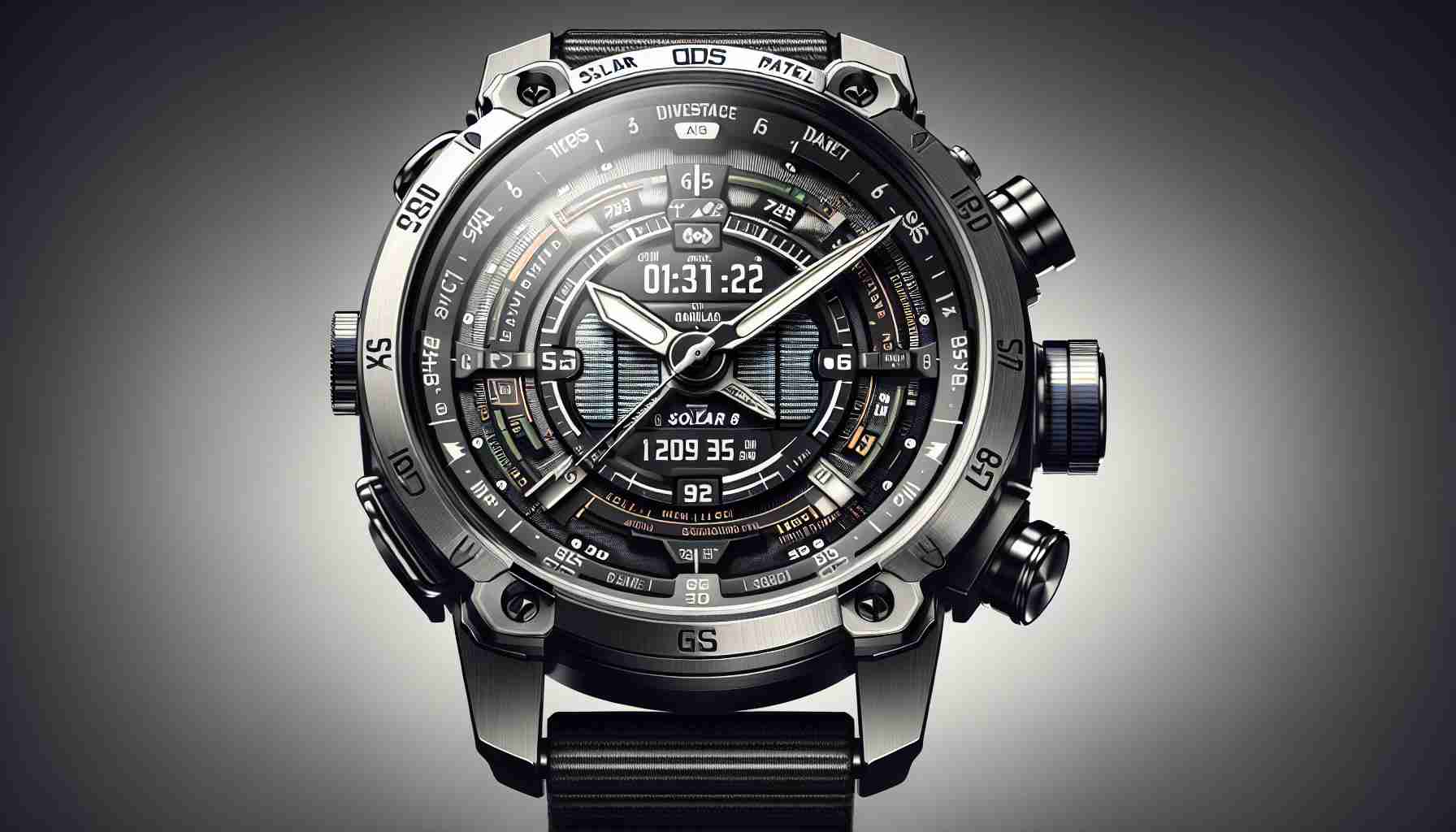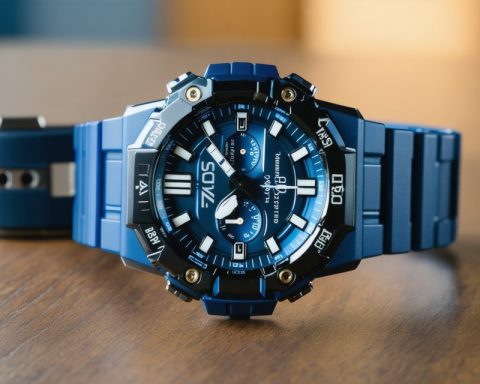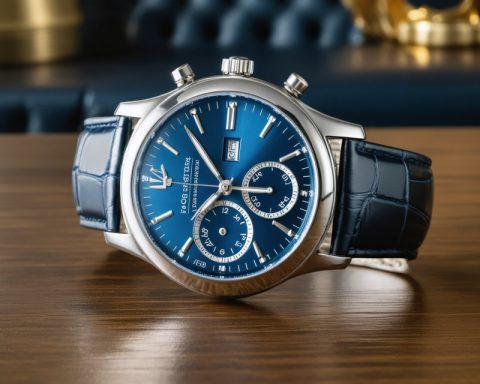Garmin has raised the stakes in the GPS watch market with the launch of the fēnix 8 Solar, now priced at $1,200. This latest model builds upon the strengths of its predecessor, the fēnix 7, adding features that outdoor enthusiasts are sure to appreciate.
The fēnix line has long been favored by adventurers, and with the fēnix 8, Garmin delivers an impressive array of functions. Key additions include a depth sensor that transforms the watch into a certified dive computer, capable of operating up to 40 meters deep. The introduction of a speaker and microphone also enhances connectivity, allowing users to take calls and access voice assistants directly from the watch.
The fēnix 8 Solar boasts significant improvements in battery life, with up to 149 hours in GPS-only mode. This durability is complemented by a rugged build featuring a titanium bezel and improved solar panel technology, ensuring it stands up to the rigors of outdoor activity.
Despite its substantial size—51mm in diameter and weighing 95 grams—the watch includes a 280 x 280 pixel display encased in durable sapphire glass. Inductive buttons enhance its water resistance, eliminating potential leaks from physical button seals.
With a suite of health monitoring features, workout tracking, and an updated user interface that makes navigation seamless, the fēnix 8 is equipped to cater to even the most demanding outdoor experiences. While the price may deter some, for avid adventurers, the fēnix 8 Solar’s comprehensive capabilities may justify the investment.
Examining the Broader Implications of Garmin’s fēnix 8 Solar Launch
The launch of the Garmin fēnix 8 Solar marks a notable progression in the intersection of technology and outdoor sports, with implications extending beyond individual consumers to societal and cultural trends. As individuals increasingly embrace outdoor activities for health and leisure, products like the fēnix 8 facilitate not only personal exploration but also foster a culture of adventure and fitness.
The economic landscape surrounding wearable technology continues to evolve, with Garmin positioning itself at the forefront of this competitive market. High-priced gadgets like the fēnix 8 Solar can stimulate the global economy by inspiring consumers to invest in premium products that enhance their lifestyles. The demand for multifunctional devices that merge fitness tracking with high-performance features signifies a shift towards an integrated approach to health and well-being, prompting businesses to innovate in ways that cater to wellness-conscious consumers.
Moreover, as outdoor activities gain popularity, there is an urgency for sustainable practices within the industry. The emphasis on durable designs and eco-friendly materials in products like the fēnix 8 Solar could influence manufacturing standards across the market. If consumers gravitate towards sustainability-conscious brands, we may see a broader push for eco-innovations that not only improve product longevity but also reduce environmental impact.
From a future trends perspective, the advancements in GPS and integrated communication technologies signal a significant shift towards increasingly interconnected experiences in outdoor sports. As smartwatches evolve, they may incorporate augmented reality (AR) features in mapping and terrain recognition, further enriching the adventurous experience. This evolution could lead to the development of virtual communities where outdoor enthusiasts share real-time data while on expeditions, enhancing both safety and engagement in exploration.
In the long term, the fēnix 8 Solar and similar products may not just be seen as tools for adventurers but as symbols of a cultural movement that prioritizes health, exploration, and technological engagement. As societies become more urbanized and sedentary, the release of innovative outdoor technology promotes a counter-narrative that encourages individuals to connect with nature. This balancing act could become crucial as we navigate contemporary challenges related to environmental sustainability, health crises, and well-being.
Ultimately, Garmin’s latest offering reflects a broader lifestyle shift—one that merges the call of the wild with cutting-edge technology, inviting consumers to engage with both their physical environment and digital connectivity in unprecedented ways. As such products become more integrated into our daily lives, they will likely shape not only market trends but cultural norms around fitness, exploration, and technology.
Exploring the Garmin fēnix 8 Solar: A Comprehensive Guide
As the flagship model of Garmin’s esteemed fēnix line, the fēnix 8 Solar has generated considerable buzz not only for its rugged design and advanced features but also for its potential to redefine outdoor adventure technology. This article delves deeper into the fēnix 8 Solar with specialized angles and insights that can help potential buyers make an informed decision.
FAQs about the fēnix 8 Solar
1. What’s new in the fēnix 8 Solar compared to its predecessor?
The fēnix 8 Solar introduces a certified dive computer capability with a depth sensor, along with improvements in battery longevity and a dedicated microphone and speaker for calls and assistant access.
2. Can the fēnix 8 Solar track my health?
Yes, it includes a wide range of health monitoring features such as heart rate monitoring, sleep tracking, and even stress monitoring.
3. How does the solar charging work?
The improved solar panel technology enhances the watch’s battery life by supplementing traditional charging methods, allowing users to harness solar energy during outdoor activities.
Pros and Cons of the fēnix 8 Solar
Pros:
– Exceptional Battery Life: With up to 149 hours in GPS-only mode, the fēnix 8 Solar can last through prolonged adventures without frequent recharging.
– Advanced Functionality: Features like the dive computer capability and voice assistant access elevate its versatility.
– Rugged Design: Its titanium bezel and sapphire glass provide both durability and a premium aesthetic.
Cons:
– High Price Point: At $1,200, it may be out of reach for casual users or those new to outdoor activities.
– Size and Weight: Weighing 95 grams and measuring 51mm, it may feel bulky for some users, particularly those with smaller wrists.
– Learning Curve: The extensive features may require time to master, which can be overwhelming for first-time users.
Potential Controversies
As thin, lightweight smartwatches grow in popularity, some users argue whether the robust features of the fēnix 8 Solar justify its size and weight. A segment of outdoor enthusiasts may debate whether a more compact device could adequately serve their needs without compromising essential functions.
Predictions for the Future
Looking ahead, Garmin may further enhance its offerings by integrating advanced biometric sensors, potentially expanding health monitoring capabilities. Additionally, the inclusion of augmented reality features could revolutionize navigation and tracking in outdoor environments, aligning with industry trends towards more immersive user experiences.
Quick Tips for Using the fēnix 8 Solar
– Optimize Battery Life: Use the solar charging capability strategically by exposing your watch to sunlight during activities, especially when in GPS mode.
– Explore Customization Options: Tailor the watch interface and features to match your specific outdoor pursuits for a more personalized experience.
– Regularly Update Software: Ensure your watch has the latest updates for enhanced functionality and features, which can be done via the Garmin Connect app.
For more detailed specifications and expert insights on outdoor technology, visit Garmin’s official website.
In summary, the Garmin fēnix 8 Solar is a formidable entry in the GPS watch market, combining cutting-edge technology with state-of-the-art durability, appealing particularly to those who thrive on adventure.







